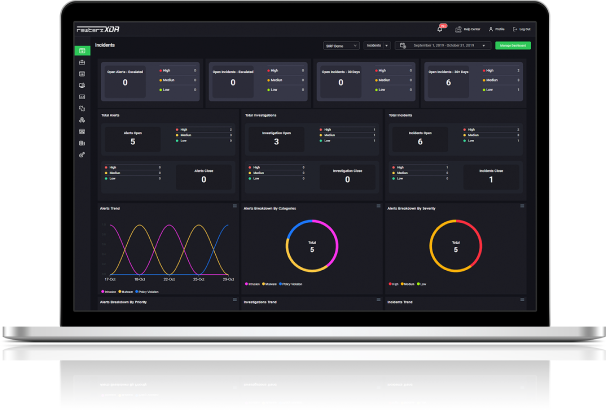

Remcos RAT – Active IOCs
January 14, 2025
Rhadamanthys Stealer – Active IOCs
January 14, 2025
Remcos RAT – Active IOCs
January 14, 2025
Rhadamanthys Stealer – Active IOCs
January 14, 2025Severity
Meduim
Analysis Summary
AsyncRAT is an open-source tool designed for remote monitoring via encrypted connections. However, it could be utilized by threat actors as it provides keylogging, remote access, and other functionality that could damage a victim's computer or system. This tool can send malicious files to the system that can be a source of other malicious software once executed. These can also be used to transfer malicious programs into USB drives and can infect other systems. Numerous malware campaigns and threat actors have utilized AsyncRAT in various recent attacks. Recently, a social engineering campaign that targeted Thailand Pass (an online travel agency) consumers was observed. Additionally, the Follina Outbreak in Australia spread AsyncRAT as a malicious payload. AsyncRAT can be delivered through several techniques, including spear-phishing, malicious advertising, exploit kits, etc.
One of the key features of AsyncRAT is its use of advanced encryption and obfuscation techniques to evade detection by anti-malware software. It also can update itself and download additional modules or plugins, which can be used to add new features or expand its capabilities. To protect against AsyncRAT and similar malware, it's important to maintain up-to-date software and security patches, use strong access controls and passwords, and regularly back up important data. It's also recommended to use anti-malware software and to be cautious of suspicious emails or links. If a system is suspected of being infected with AsyncRAT, it's important to isolate it from the network and seek the assistance of a security professional.
Impact
- Unauthorized Access
- Information Theft
Indicators of Compromise
MD5
9dcd35fe3cafec7a25aa3cdd08ded1f4
3aa6c0c3e8a405028606f3bc293f0b74
15fe2ac3357c534e280cc8d9de964aed
33961801df7df4040fb2282d6103286c
be3bf7a258359bd7c14c47b3872c9531
SHA-256
ce4f85d935fe68a1c92469367b945f26c40c71feb656ef844c30a5483dc5c0be
4674e4792d2b85b545d1f94442f8465e08412e220cd3eff119458f609c030a96
441c8c73ea3f781774e9ee684d4d51127ec736c9fb6423fad0aea20695abd3c3
782d0356109cd4bdbf0c69932dd6f753754a426927c26f7db60bff7344c46c1a
ef9aeef4f3b7ea00add3168043c866716d72353065d95b7b7dd981641d91f1ae
SHA1
13f199bfd3f8b2925536144a1b42424675d7c8e4
e8a6db0181e3c6839a306a4d7e01b69f98931061
af1e4824a0a4954c69fe91b6ad54e66a4f3a7511
1c0b29fa3a333974788a71c896e30f38e2bf3769
be71f346690b8f384961bf73b382181c5959aef6
Remediation
- Block all threat indicators at your respective controls.
- Search for indicators of compromise (IOCs) in your environment utilizing your respective security controls.
- Do not download documents attached in emails from unknown sources and strictly refrain from enabling macros when the source isn’t reliable.
- Enable antivirus and anti-malware software and update signature definitions promptly. Using multi-layered protection is necessary to secure vulnerable assets.
- Patch and upgrade any platforms and software on time and make it into a standard security policy.
- Enforce access management policies.
- Along with network and system hardening, code hardening should be implemented within the organization so that their websites and software are secure. Use testing tools to detect any vulnerabilities in the deployed codes.








